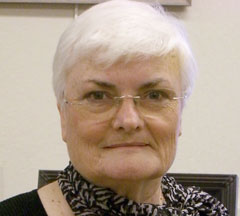How Long Do Bacteria Survive in Indoor Sewage Spills?
By Dr. Harriet Burge, EMLab P&K's Director of Aerobiology
This is a good question that, currently, does not have an answer. Virtually all of the research
on the survival of these bacteria has focused on water, soil, manure, and sewage sludge. On the
other hand, the indoor environmental investigator needs to know how long the bacteria survive
as a sewage spill or flood dries, and how to document that the environment has been
sufficiently cleaned.
Bacterial decay (death) rates are generally measured in log reductions in culturable organisms.
Note that there may be viable organisms remaining that are not culturable but could indicate a
continuing risk of exposure. A logarithmic decline in a bacterial population means that a large
percentage of the bacteria die quickly, and the rate of death slows as time passes.
A quick survey of the literature revealed the following estimates of survival time for some
important bacteria:
| Organism |
Substrate |
Survival Time |
| E. coli |
Water |
> 100 days |
| Enterococcus |
Dry Surfaces |
> 24 hours |
| Staphylococcus aureus |
Hospital dry surface |
> 9-11 days |
| E. coli |
Lettuce |
> 25 days |
| E. coli |
Soil |
> 60 days |
| E. coli H37 |
Soil |
> 15 weeks |
The fact that all of these times are indicated with "greater than" means that residual
organisms were present at the end of each of these experiments. To clarify what logarithmic decay
means, let's assume you have a sewage spill with 1,000,000 bacteria/100ml and a decay rate of 1
log/day. (This is an artificially high rate for convenience). After one day you will have 100,000
bacteria/100ml, and it will take 5 additional days to reach 1 bacterium/100ml. For a small spill
(e.g., 30 liters), you will have a total of 30,000,000 total bacteria after one day, and 3,000 at
day five.
This assumes, of course, that the rate of decay remains constant over the time of measurement
and you don't do anything to artificially reduce the population. In the case of indoor sewage
spills, the natural decay rate would tend to increase because of the reduction in the amount of
liquid remaining (as it evaporates), and because the air and surface temperature to which the
spilled sewage is exposed is likely to be higher than that in the original source. Both
increasing temperature and drying tend to increase the decay rate.
Let's say that the decay rate in the spilled sewage increases gradually over 24 hours to 2 logs/day.
Thus, by the end of the second day in the example above you will have 1000 bacteria/100ml, and
by day 3 you may be down to less than 10 bacteria/100ml. Of course these changes are dependent
in part on ambient relative humidity and both ambient and surface temperatures.
Now, let's assume you are on-site within 1 hour after the spill. You are faced with slightly
less than 300,000,000 bacteria. You get right to work removing the water and the solids and are
able to effect a 99.9% reduction by the end of the day. You have removed 3 logs of bacteria and
are now down to about 30,000 bacteria assuming natural decay continued.
The good news is, if you used detergent and bleach (1/2 c/gallon of water), you have killed at
least 3 logs more, bring you down to 30 bacteria, which in my opinion is an acceptable number.
Unfortunately, these 30 bacteria will not be grouped in one little spot so that you can collect
them and "prove" that only 30 are left. Depending on the size of the area affected,
you would have to take many samples to document efficacy. I don't think the effort and cost is
worth it.
Documentation on how to clean sewage spills indoors is available in many places. The procedure
explained at KingCounty.gov
is good, although I would use a more concentrated bleach solution. Another good procedure can
be found at Washington State Department of Health's
"Cleaning up a sewage spill" (pdf).
An important thing to remember is that once the spill has happened, the bacteria are not
confined to the actual wet places. They could also be on higher surfaces. It is important to
clean all surfaces that might be touched by the occupants in the near future.
This article originally appeared in the March 2011 issue of Indoor Environment Connections.
Reprinted by permission.
 |
|
About Dr. Harriet Burge
Dr. Harriet Burge is EMlab P&K's Director of Aerobiology and Chair of EMLab P&K's
Scientific Advisory Board. Widely considered the leading expert in indoor air quality (IAQ),
Dr. Burge pioneered the field more than 30 years ago. She has served as a member of three
National Academy of Sciences committees for IAQ, including as Vice-Chair of the Committee
on the Health Effects of Indoor Allergens. View Dr. Burge's Curriculum Vitae.
Read "Ask Dr. Burge" articles
|